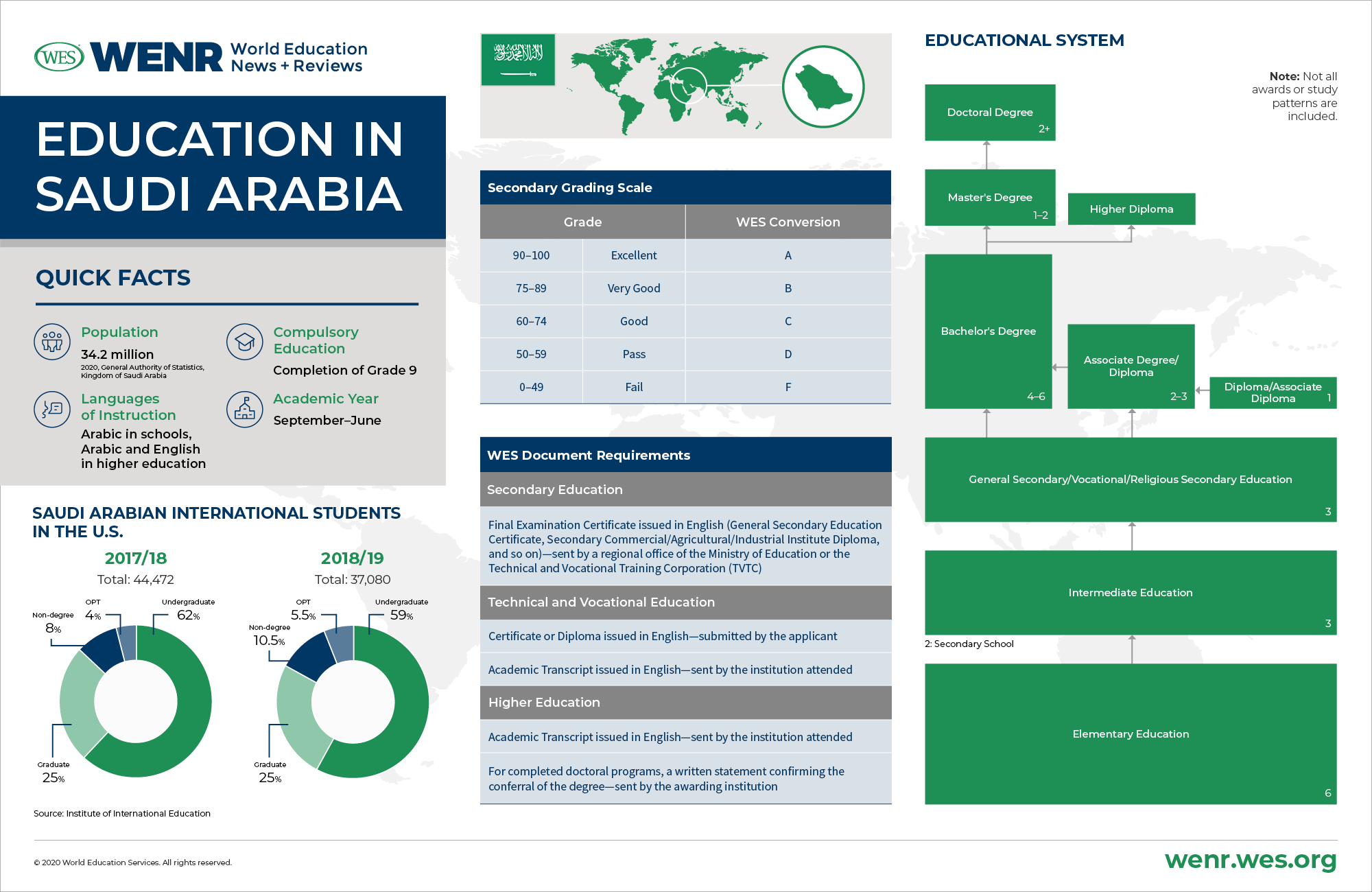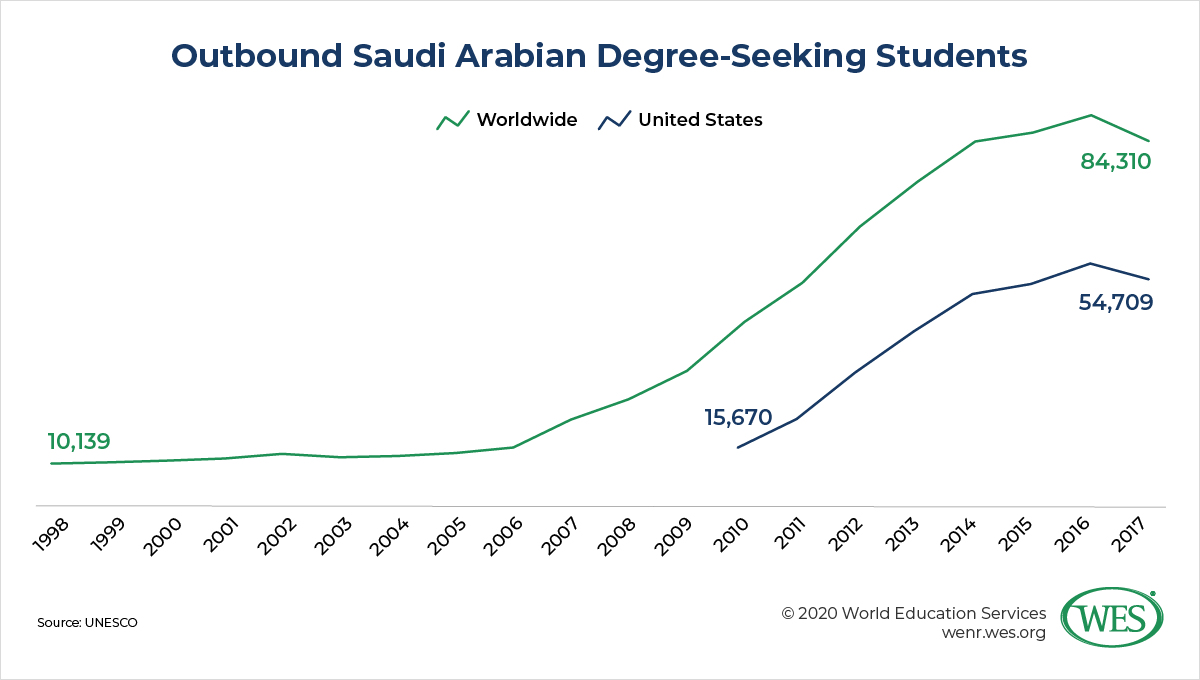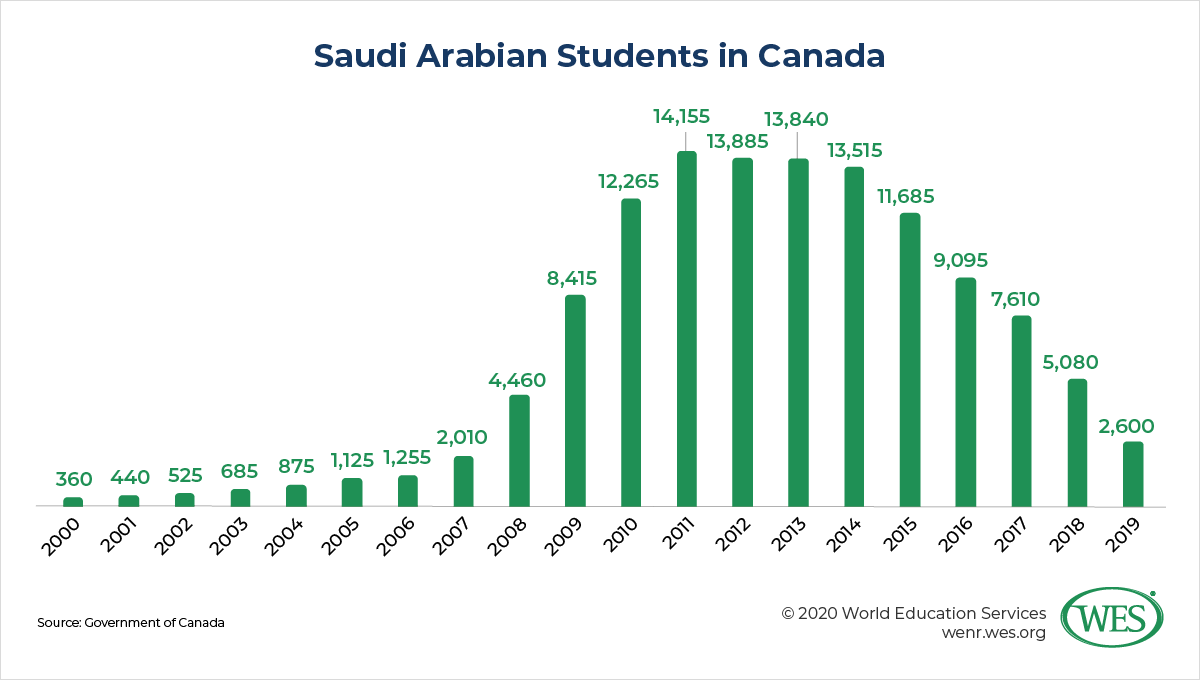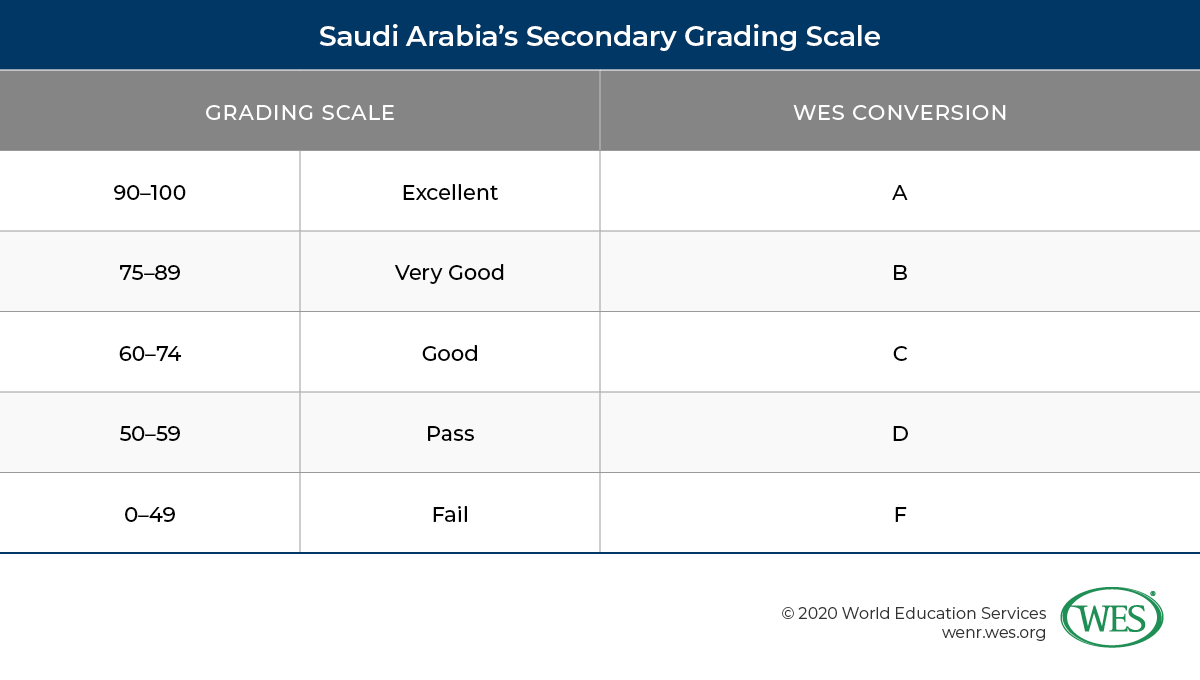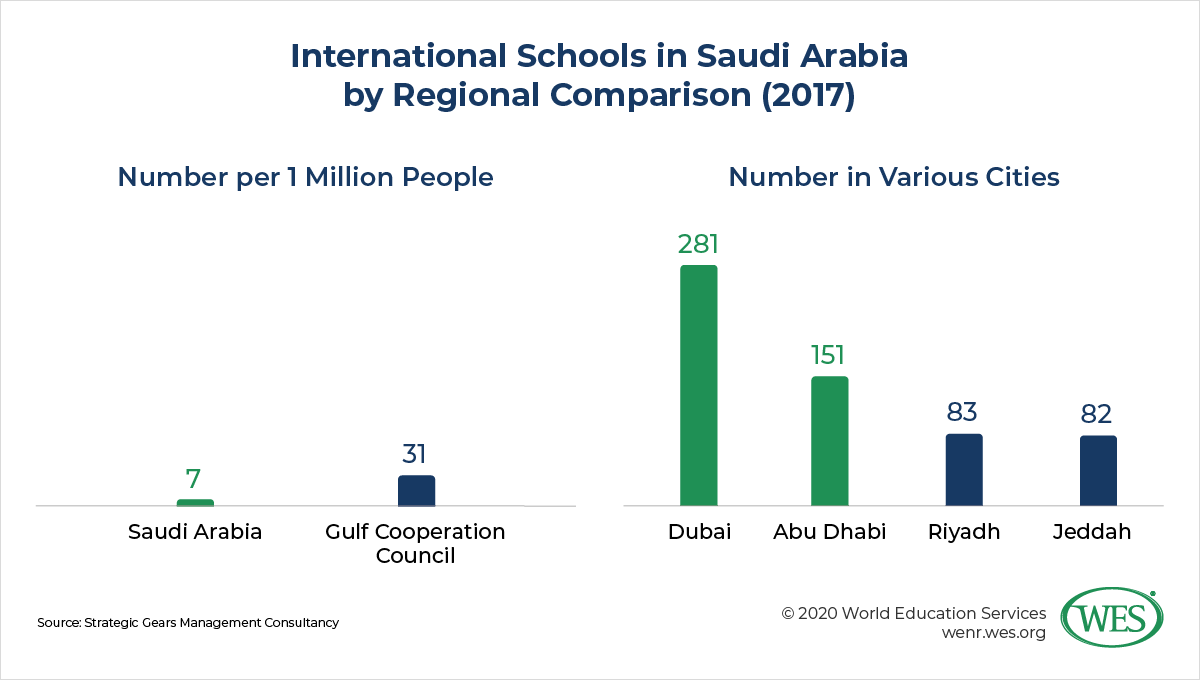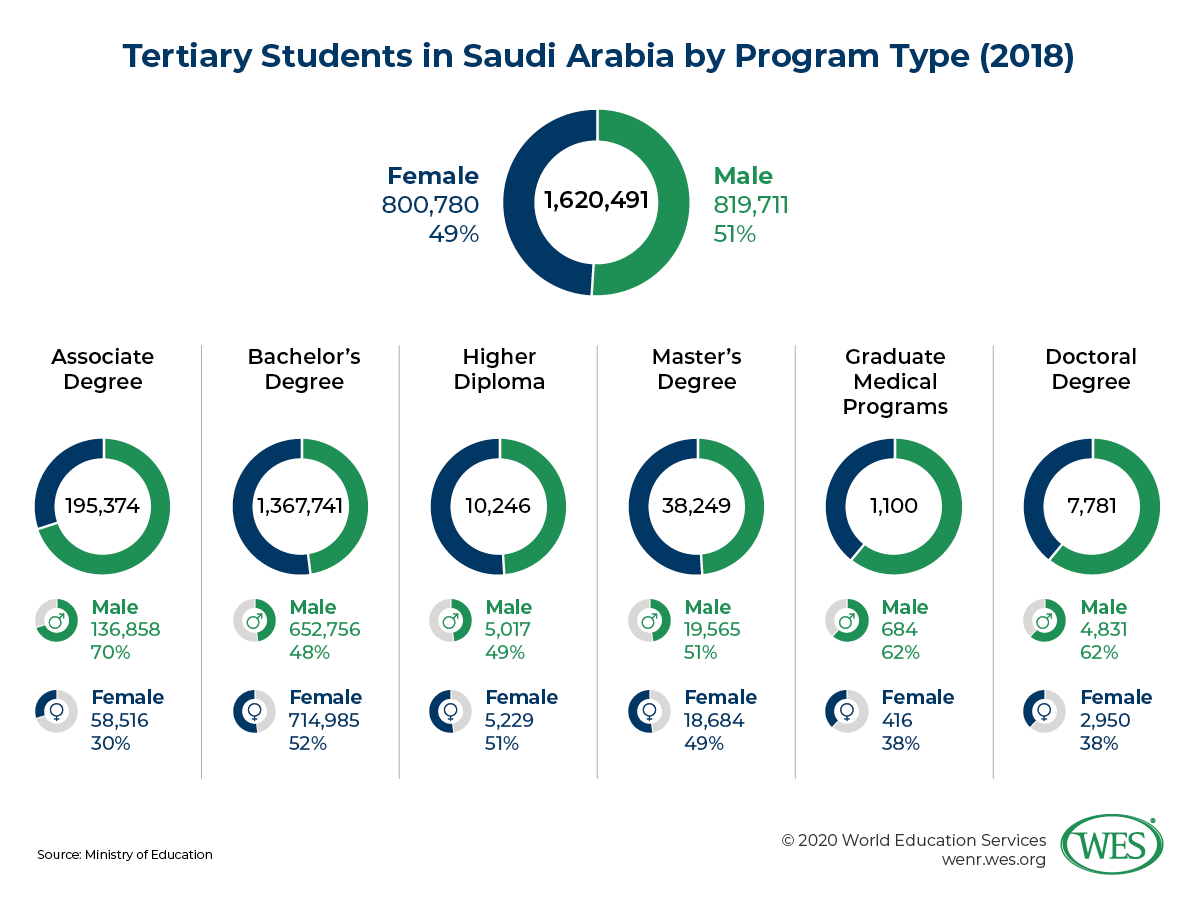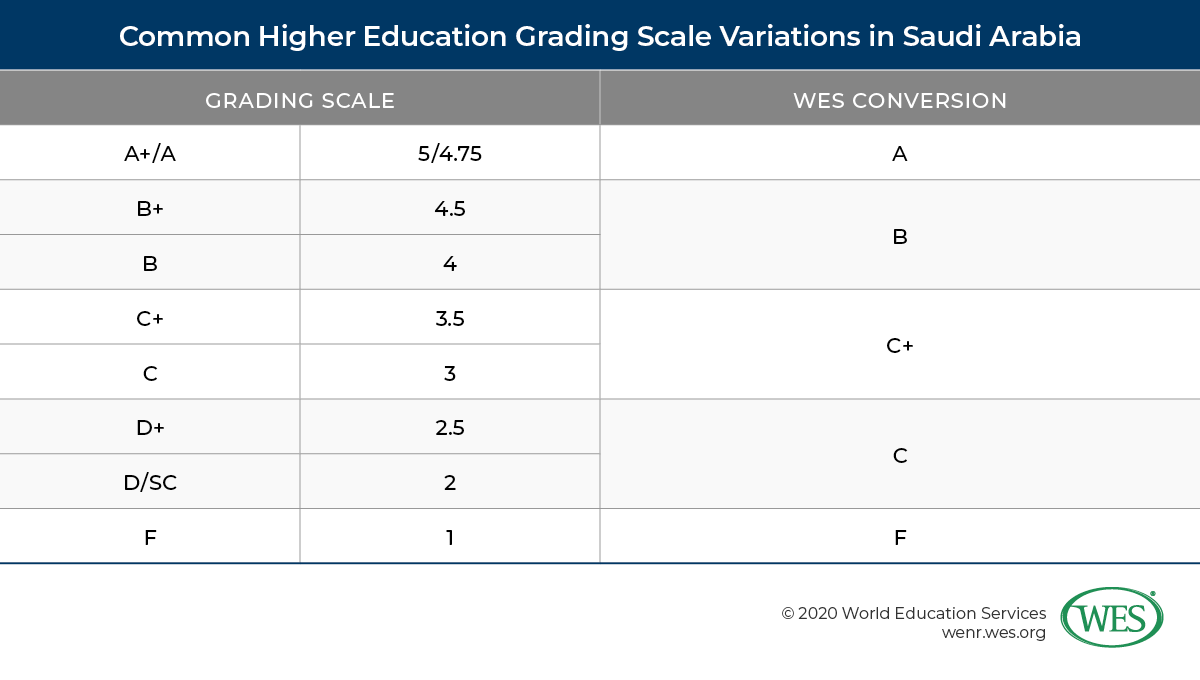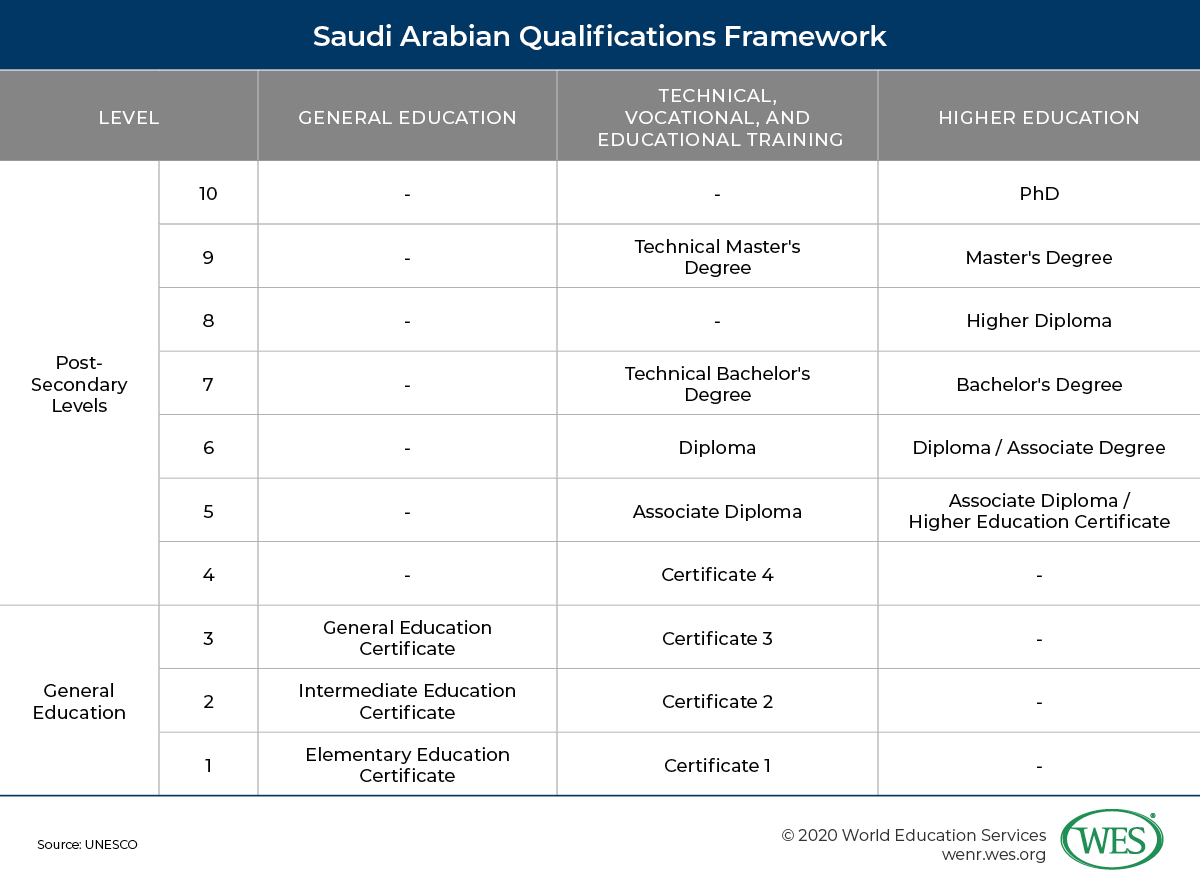Sidiqa AllahMorad, Senior Knowledge Analyst, and Sahel Zreik, Credential Examiner at World Education Services
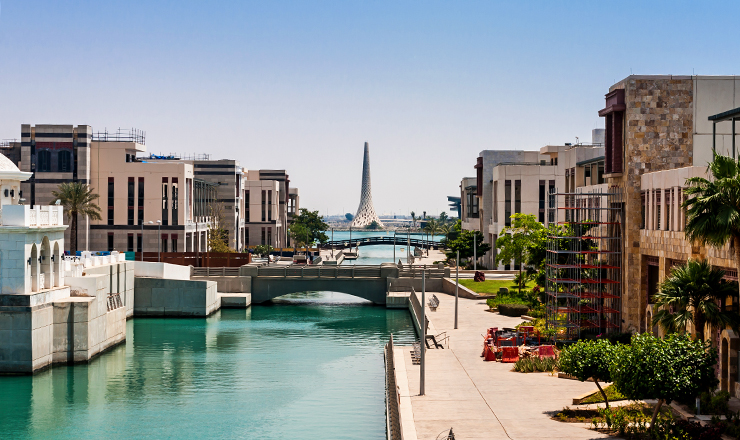 [1]
[1]Campus of the King Abdullah University of Science and Technology in Thuwal on the coast of the Red Sea.
While Saudi Arabia has one of the largest economies in the world [2], the country is wrestling with doubts about the sustainability of its economic prosperity. Saudi Arabia’s immense oil reserves, discovered in the 1930s, helped propel the Persian Gulf country of 34 million people [3] from an underdeveloped desert nation to a major economic player within decades. According to the Organization of the Petroleum Exporting Countries, the Kingdom of Saudi Arabia (KSA) “possesses around 18 per cent of the world’s proven petroleum reserves and ranks as the largest exporter of petroleum. The oil and gas sector accounts for about 50 per cent of gross domestic product, and about 70 per cent of export earnings [4].”
However, given that the Saudi crude oil reserves are a finite resource estimated to be depleted within 90 years [5], the KSA now urgently seeks to diversify its oil-dependent economy. The country’s official development plan for the coming decade, Saudi Vision 2030 [6], intends to internationalize the Saudi economy, boost foreign investment, privatize state-owned assets, create private sector jobs, and increase non-oil-related exports to 50 percent of all Saudi exports to ensure that the Kingdom is on the right trajectory to thrive in a post-oil era.
The modernization of Saudi Arabia’s education system and the upskilling of the Saudi population are major aspects of this drive and considered vital for Saudi Arabia’s economic transformation [8]. To ensure that Saudi youth are “equipped for the jobs of the future [6]” in a knowledge-based economy, the government is pursuing far-reaching education reforms, including the rollout of modernized school curricula that emphasize critical thinking, the re-training of teachers, and the construction of new schools, as well as the decentralization of Saudi Arabia’s rigid, centrally steered school system.
The Future Gate [9] initiative, implemented by the company Tatweer Educational Technologies (TETCO) on the behest of the Saudi government, is ushering in smart classrooms and digital education management systems across Saudi Arabia: “‘Textbooks are being swapped out for mobile devices that provide up-to-date content in real time. Printed exams are transitioning to online assessments [10].’”
In higher education, the government has invested heavily in research and the establishment of new and more specialized universities. Its aim is to boost tertiary enrollments and accommodate surging demand, which is driven by population growth and other factors. Education is the largest sector on Saudi Arabia’s government budget [11]. The country spends more on education than most Arab countries.
While declining oil prices have strained public finances and overall education spending has decreased in recent years, Saudi Arabia built 719 new schools [11] in 2018 alone. Increasing educational attainment rates is crucial for a country where more than half of the population is under the age of 25 and youth unemployment is sky-high. While most of Saudi Arabia’s non-oil-related workforce is made up of low-paid migrant workers, 25 percent [12] of Saudi nationals were unemployed as of late 2018. One objective of recent reforms is therefore to boost enrollments in “fields of study related to the job market [13],” like computer science or business administration. Traditionally, many Saudi students preferred to study fields like social sciences, religious studies, history, or literature [13].
International Student Mobility
Editorial note: As of publication, the coronavirus pandemic has halted international student mobility worldwide and resulted in uncertainty about future mobility trends. The crisis may significantly affect future international student flows, including the ones outlined in this article.
According to UNESCO statistics [14], Saudi Arabia is among the 10 biggest sending countries of international degree-seeking students worldwide. Fully 5 percent of all Saudi tertiary students were studying abroad in 2017—a high outbound student mobility ratio by global standards sustained by extensive government funding. The Saudi government has long used its petrol dollars to send students overseas on scholarship programs in order to bridge capacity shortages at home and develop the KSA’s human capital base. While early programs after independence were small in scope and focused on undergraduate studies, they expanded significantly throughout the 20th century and increasingly shifted to postgraduate studies following the establishment of Saudi Arabia’s first university, King Saud University, in 1957.1 [15]
In 2005, Saudi Arabia eventually launched what is known as one of the largest scholarship programs ever initiated by a government, the massive multi-billion dollar King Abdullah Scholarship Program (KASP), which allowed more than 200,000 Saudi citizens to earn degrees in more than 30 countries [16] during the first decade of its existence alone. A crash in global crude oil prices and budget constraints forced the Saudi government to scale back the program in 2016 [17], but KASP support nevertheless continues today, providing recipients with an unprecedented level of funding: Qualified students receive monthly stipends for living expenses, payment of tuition fees, and other study-related expenses, including annual round-trip airfare for students and their spouses.2 [18] What has changed since 2016 is that the program now supports fewer students and focuses on sending them to universities ranked among the top 200 in international university rankings [19] or to programs in the top 50 in their field.
The impact of KASP was profound. Whereas the number of Saudi international students had hovered around 10,000 to 12,000 in the late 1990s and early to mid-2000s, scholarship funding helped boost this number to 52,000 by 2011 before it eventually peaked at 90,245 students in 2016.
The vast majority of Saudi international students are enrolled in the United States, Saudi Arabia’s main military ally. The growing influx of these students has made Saudi Arabia the fourth-largest sending country of international students to the U.S., beginning in 2011/12. In fact, the KASP scholarship program was initiated by the U.S. and Saudi governments with the intention [21], in part, of strengthening bilateral relations [22] following the 9/11 terror attacks, which were perpetrated mostly by Saudi nationals.
What’s more, Saudi Arabia has facilitated academic cooperation with the U.S. by showering top U.S. universities with lavish gifts and research funding worth more than USD$350 million [23] in total over the past decade. Sending students to the U.S. allows Saudi Arabia to educate its intellectual elites at top universities, while it simultaneously brings various material benefits for U.S. stakeholders, going far beyond tuition fees. As one university executive from Kentucky told the New York Times, the presence of Saudi students helps the local economy. “‘The car dealerships have done wonderfully well … because most of them purchase a car as soon as they arrive [21].’”
According to the Open Doors data of the Institute of International Education (IIE), around 51 percent of Saudi students in the U.S. are enrolled in undergraduate programs, 15 percent study in master’s programs, and 12 percent are in PhD programs. Engineering is the most popular field of study, accounting for 30 percent [24] of Saudi enrollments in 2018/19, followed by business (19 percent).
While most Saudi students in the U.S. are in California, they are enrolled in universities all over the country. Fully 73 percent of them are male, reflecting the fact that it’s still far more difficult for Saudi women to travel abroad independently, recent advances [25] in female participation in education [26] in Saudi Arabia notwithstanding. Until 2019 [27], Saudi women were not allowed to travel overseas without being accompanied by a male guardian.
The Saudi government generally seeks to steer students into study programs it deems critical for the development of the country’s economy, such as engineering, medicine, or computer science. Once enrolled, scholarship recipients, who make up roughly two-thirds of Saudi students in the U.S., are expected to remain in their study programs and not switch majors. They are said to be closely monitored [28] by Saudi authorities and are required to return home after graduation. Independent, self-funded students, by comparison, tend to be more interested in business majors [29].
In general, Saudi students are driven to the U.S. by various factors, including the desire to broaden their academic horizons, obtain a top education, and improve their English skills [30]. Unlike students from other top-sending countries like India, Saudi nationals are less interested in pursuing international education as a springboard for post-study work and immigration. Only a minuscule number of Saudis filed applications for H-1B visas in recent years [31].
The scaling back of the KASP in 2016 caused a significant decrease of Saudi student enrollments in the U.S. According to IIE, their number dropped by no less than 39 percent [32] between 2015/16 and 2018/19, from 61,287 to 37,080 students.
Even so, Saudi Arabia remains the fourth-largest sending country of international students in the U.S. after China, India, and South Korea. While some U.S. universities have recently reassessed their collaboration agreements [33] with the Saudi government following the murder of journalist and Saudi dissident Jamal Khashoggi in 2018 [34], the U.S. continues to welcome large numbers of government-sponsored Saudi students. In contrast to the travel restrictions [35] the Trump administration has imposed on several Muslim-majority countries with the justification of preventing “foreign terrorist entry into the United States,” the recent 2020 terror attack by a Saudi military trainee at a U.S. military base did not result in comparable measures nor a cooling of diplomatic relations between the two countries.
North of the U.S. border, on the other hand, diplomatic spats have had a significant impact on international student flows. When the Canadian government in August 2018 demanded that Saudi Arabia release a number of jailed human rights activists [36], the KSA halted trade with Canada [37], canceled Canada-bound flights and scholarships, and ordered Saudi students in Canada to return home. Although some Saudi students decided to continue their studies at their own expense, this conflict led to an instantaneous drop in enrollments in Canada, which at the time was the third most popular study destination among Saudi degree-seeking international students.
According to Canadian government statistics [38], the number of Saudi students fell from 7,610 to 5,080 between December 2017 and December 2018 before dropping to only 2,600 in 2019. Both Saudi students and Canadian institutions sustained considerable financial losses. Mount Saint Vincent University in Nova Scotia, for instance, estimated that the “unplanned departure of most of its sponsored Saudi students resulted in a loss of $900,000 in anticipated revenue. Saint Mary’s University in Halifax estimates a loss of $740,000 in tuition alone [39].” But as drastic as the recent drop was, it was a continuation of enrollment declines in recent years. After the number of Saudi students in Canada spiked from 1,125 in 2005—the year the KASP was introduced—to 14,155 in 2011, it gradually declined over subsequent years.
Other top destination countries of Saudi students are the United Kingdom, which hosted 7,891 Saudi students in 2017; and Australia, which enrolled 3,808 Saudi international students in 2017, according to UNESCO. Enrollment trends in these two countries follow the same pattern as in the U.S. and Canada: a sharp increase in enrollments induced by the KASP followed by subsequent declines after the scholarship program was scaled back. In addition to English-speaking Western countries, the neighboring United Arab Emirates attracts smaller numbers of Saudi students.
Looking ahead, it’s likely that the KSA will remain an important sending country of students in the future, given the Kingdom’s booming youth population and rising demand for higher education and skilled labor. While the KASP program may be phased out after 2020, various new scholarship programs managed by different Saudi ministries have emerged, particularly for graduate students [41] and programs related to economic growth sectors like health care and tourism.
Inbound Student Mobility
Saudi Arabia is not only a major sender of international students, it has also become an increasingly popular international study destination itself. The expansion of Saudi Arabia’s higher education system and the construction of more universities in recent years has helped accommodate a rising inflow of students from other countries, resulting in a high inbound student mobility ratio of 4.6 percent. Between 2008 and 2017, the number of international students enrolled in degree programs in Saudi Arabia grew fourfold, from 18,725 to 74,000 [42]. It should be noted, though, that Saudi Arabia counts permanent resident non-citizens that study in Saudi Arabia as international students. This means that the international student body includes the children of guest workers; it isn’t solely made up of students who deliberately sought out the KSA as their destination of choice.
Most international students in Saudi Arabia are from other Arab countries, such as war-torn Yemen and Syria (13 percent and 12 percent, respectively), as well as Egypt, Jordan, and Palestine. Pakistan and India are large and growing sending countries as well, driven, in part, by the fact that these nations are major sources of labor migration to Saudi Arabia. In addition, the KSA has become an increasingly important study destination for students from Africa. The number of students from Nigeria, for instance, has tripled over the past eight years, making it the fifth-largest sending country of international students in the Kingdom.
Not only does Saudi Arabia offer these students a variety of English-taught programs and universities of increasingly high quality, it also provides extremely generous scholarship programs for international students. The King Abdullah University of Science and Technology, for instance, supports qualified master’s and doctoral students with full tuition support, free housing, medical care, and a living allowance of USD$20,000 to USD$30,000 annually [43]. In addition, renowned Islamic universities like the Islamic University in Madinah are popular among Muslim students from around the world.
Increased research collaborations with foreign universities also play a role in stimulating student exchange. It should be noted, however, that Saudi Arabia remains a relatively closed education system compared with other Persian Gulf countries like the UAE, one of the world’s pre-eminent transnational education hubs. It was not before late 2019 that the government of the KSA authorized [44] foreign universities to set up branch campuses [45] in Saudi Arabia—a development that could potentially increase the KSA’s attractiveness for international students while simultaneously slowing outbound student mobility. It remains to be seen, though, if and how universities from Western countries can navigate restrictions on academic freedoms in Saudi Arabia [46].
In Brief: The Education System of Saudi Arabia
Modern, government-steered education is relatively new in Saudi Arabia. Traditionally, education was provided by mosques and basic religious schools (kuttab) and only accessible to the children of ruling elites and wealthy families. Prior to the 1930s, the country had only a handful of private elementary schools and no public school system to speak of [47].
Even though the first Saudi high school was created in 1936 to prepare students for higher education abroad, substantial growth of the secondary school system did not occur before the 1970s. At the beginning of that decade, only 15 percent of Saudi men were literate, while the literacy rate among women was even lower—2 percent—reflecting the exclusion of women and girls from formal, non-religious education before the 1960s [48].
Today, young Saudi women participate in education at largely the same rate as men and are among the most educated women in the Muslim world. Of note, 66 percent [49] of Saudi university graduates in natural sciences, mathematics, and statistics were women in 2018, although far fewer women than men enter graduate programs, and the employment rate among Saudi women is extremely low. The education system is still gender-segregated with women being mostly educated at dedicated institutions—women’s colleges and women’s campuses—even in higher education. The first co-educational university was not established before 2009.
Unsurprisingly, religion plays an important role in education in the ultra-conservative Islamic state of Saudi Arabia. The country’s education system evolved from Islamic traditions. The inculcation of the Islamic faith remains one of the central aims of Saudi education. Substantial parts of the elementary and secondary school curricula are devoted to the study of the Koran and Wahabbist ideology (an interpretation of Islam), and even university programs incorporate Islamic studies as mandatory.
Growth of the Education System Since the 1970s
In the 1960s, the Saudi state began to greatly expand its institutions and infrastructure, sustained by its growing oil revenues. In 1970, the government launched a series of five-year development plans [50] that had a transformative impact on Saudi Arabia’s public sector, including its education system. During the “first three five-year plans (1970-85), school enrollments increased by 192% at the elementary level, 375% at the intermediate level, and 712% at the secondary level [51].”
Further advances in educational participation were made in the following decades, notably in the 21st century. The upper-secondary net enrollment ratio (NER), for instance, recently jumped from 51 percent in 2009 to 85 percent in 2018 [14]. These increases notwithstanding, overall educational attainment rates in Saudi Arabia are still comparatively low. In 2018, fully 43 percent of Saudis had not completed upper-secondary education, compared with an average of 22 percent in OECD countries [49].
A more diversified higher education system emerged with the establishment of six new universities between the 1960s and 1980s, following the 1957 opening of King Saud University (KSU). Total enrollments jumped from 6,900 in 1969 [52] to around 65,500 students in the early 1980s, about one-third of whom enrolled at KSU, by far the largest higher education institution in Saudi Arabia. Even so, it was not before the 21st century that the Saudi system began to cater to larger parts of society. By 2000, the tertiary GER had jumped to 22 percent, up from 9 percent in 1985, before spiking to 68 percent in 2018 [14]—a ratio on par with that of Canada or France.
The number of HEIs in Saudi Arabia has grown tremendously in recent years. There are now 29 public universities and 11 private universities in the Kingdom, along with hundreds of community colleges and women’s colleges, and a rapidly growing number of technical and vocational training schools. This growth has recently helped boost overall tertiary enrollments from 1.36 million in 2013 to in 1.62 million in 2018, but it’s anticipated that capacities in the system need to be expanded further in the years ahead to accommodate Saudi Arabia’s quickly growing college-age population [53].
After long shunning private higher education, the Saudi government has recently come to view it as a promising means of boosting capacity, lowering public costs, and creating a more modern and diversified education system. Although Saudi Arabia’s private sector is small and nascent, observers [53] expect it to play an increasingly important role in absorbing the surging demand for education in the country. While 95 percent of Saudi students attend government-funded public universities, the percentage of enrollments in private HEIs has increased by 64 percent between 2009 and 2018, according to UNESCO statistics [14].
Administration of the Education System
Saudi Arabia is a unitary state made up of 13 administrative regions. It’s an absolute monarchy with a highly centralized system of government in which all education-related decisions are made by the central government in Riyadh, the country’s capital. There are three dedicated oversight bodies: the Ministry of Education (MOE), the Ministry of Higher Education (MHE), and the Technical and Vocational Training Corporation (TVTC).
The MOE funds the public school system and oversees public schools through departments of education, directorates, and education offices in Saudi Arabia’s different regions. It determines education policies, standards for teacher recruitment, and the national curriculum and textbooks. Private Saudi-owned schools are tightly overseen by the MOE as well; they must teach the national curriculum and comply with various stipulations [54], such as operating as single-sex institutions (with the exception of kindergartens and nursery schools).
International schools, on the other hand, are allowed to teach foreign curricula, but “must teach the subjects of Arabic language principles, Islamic civilization and kingdom’s history and geography for at least one hour per week [55].” These schools tend to be co-educational and were originally allowed to enroll only foreign citizens, but Saudi citizens have recently been permitted to attend these institutions as well. Expats very rarely enroll their children in public schools, where pupils are expected to be Muslims.
It should be noted that there are currently attempts afoot to decentralize the school system to give individual schools greater autonomy and reduce bureaucracy [56]. In 2018, the MOE gave 2,000 public schools in four of Saudi Arabia’s regions—some 8 percent of public schools—fiscal and administrative autonomy. These schools will be allowed to make minor modifications to the curricula.
Like the school system, higher education in the KSA has historically been governed in a highly centralized manner. It’s steered by the Council of Higher Education and administered by the Ministry of Higher Education (MHE), which determines curricula, admissions criteria, admission quotas, and faculty appointments. Even private universities are tightly regulated by the government, resulting in an inflexible bureaucratic system that allows little institutional autonomy. Overall, there are few academic freedoms in Saudi Arabia.
That said, the government now seeks to decentralize the system, at least to some extent. In 2009, the government established the first wholly autonomous HEI, the King Abdullah University for Science and Technology (KAUST). The first co-educational HEI [57] in the Kingdom and one of the world’s most generously funded universities, KAUST represents an attempt to “build a world-class research center and university” with “all the brain power and high-tech equipment oil money can buy [58].” In another example of relaxed university oversight, King Saud University was in 2011 allowed to adopt a more participatory model of governance that takes into consideration the input of staff, students, and external stakeholders from local and business communities—“the first time that such a distribution of decision-making authority has been introduced into the governance model for higher education in Saudi Arabia.”3 [15]
Technical and Vocational Education and Training (TVET) in technical colleges and secondary schools is overseen by the TVTC [59], formerly known as General Organization for Technical Education and Vocational Training. Formally an independent institution [60], TVTC is run by a board of directors that comprises representatives of the government and private industry. It directly administers several technical colleges [61], as well as dozens of secondary vocational schools, and designs TVET curricula and national training standards.
Academic Calendar and Language of Instruction
The school year in Saudi Arabia begins in September and ends in June in both the school system and higher education. Students attend school five times a week, Sunday to Thursday. In most cases, the academic year is divided into two semesters of 18 weeks, from September to December, and from January to June.
The language of instruction in public schools in Saudi Arabia is Arabic. In higher education, Arabic is increasingly being replaced with English, particularly in medicine, engineering, and science. Some universities, such as KAUST, use English as the sole official language of instruction; all applicants need to demonstrate English language proficiency to be admitted [62].
Elementary Education
School education in Saudi Arabia is called general education and is divided into three stages: elementary education (six years), followed by intermediate education (three years), and secondary education (three years). Education is compulsory through intermediate education—children are officially required to enter school at the age of six and must attend for nine years. Early childhood education is neither mandatory nor overly prioritized. Only 22 percent of children age three to five attended early childhood schools, mostly private institutions [49], in 2017.
Elementary education lasts six years (grades one to six) and is open to all Saudi children. It is provided free of charge at public schools, as are all levels of general education. The curriculum includes Arabic, Islamic studies, mathematics, science, and art with other subjects like English, social studies, and computer knowledge introduced in higher grades. Historically, girls followed a slightly different curriculum that did not include physical education, for instance, but this practice has recently [63] been terminated. At the end of grade six, pupils who complete all requirements are awarded the General Elementary School Certificate (Shahadat Al-Madaaris Al-Ibtidaa’iyyah). Elementary education is provided predominantly by public institutions—merely 9 percent of elementary students were enrolled in private schools in 2018 [14].
Intermediate (Lower-Secondary) and Secondary Education
Intermediate education lasts three years (grades seven to nine). The curriculum includes the same subjects as in elementary education: Arabic, English, Islamic studies, geography, history, mathematics, science, computers, and physical and health education. Promotion is based on continuous assessment and exams at the end of each term. At the end of grade nine, students who meet all requirements are awarded the Intermediate Education Certificate (shahadat al-kafa’at al-mutawassita), which is required for progression into secondary education.
Secondary education comprises a further three years of study (grades 10 to 12) and is offered in different specialization streams: general, religious, and technical-vocational. Students in the general stream follow a common core curriculum in grade 10 before concentrating in science or liberal arts in the final two grades. Subjects studied include Arabic, English, mathematics, Islamic studies, geography, history, biology, chemistry, physics, geology, computer and information technology, and health and physical education. Students are examined at the end of each semester; the final grades in all subjects in each semester are listed on the final transcript, which is commonly issued in both Arabic and English. The graduation certificate is called the General Secondary Education Certificate (shahadat al-thanawiyyah al-‘aama or shahadat al-marhalat al-thanawiyyat), commonly referred to as thanawiyyah. It indicates the stream and a final cumulative grade point average that is utilized for university admissions. The grading scale used by Saudi schools is shown below.
Programs in the religious stream include a larger number of hours in more specialized Islamic studies than regular programs, in addition to the general academic core curriculum. Graduates from these programs, which are taught at religious high schools under the purview of the MOE, are expected to be able to recite the entire Koran and be employable as imams.4 [15] Vocational and technical programs, on the other hand, are offered by dedicated vocational schools overseen by the TVTC. They include theoretical study and practical training in specific vocations in addition to general academic subjects (see also the TVET section below). Graduates in religious and vocational streams are awarded the Religious Institute Secondary Education Certificate (shahadat al-thanawiyyah al-‘aama lil ma’aahid al-ilmiyya) or the Secondary Vocational School Diploma (diplom al-madaaris al-thanawiyyah al-mihaniyyah), respectively. Both these credentials provide access to higher education, but academic pathways are more limited than for holders of the general thanawiyyah.
Most students in Saudi secondary education are enrolled in public schools. While the share of enrollments in private institutions is higher than in elementary education, about 84 percent of upper-secondary students attended public schools in 2018 (up from 80 percent in 2013 [14]).
International Schools
Compared with the neighboring UAE and other Persian Gulf monarchies, the more insular education system of Saudi Arabia has a relatively small number of international schools. One reason is that Saudi citizens were only recently allowed to enroll in international schools, so that international schools catered exclusively to the children of the approximately 10 million expat workers in the Kingdom (who make up more than 75 percent [65] of the workforce). However, now that restrictions on attending international schools have been lifted, there is a growing demand for international schools among Saudi students [66]. Most international schools in the KSA teach British or U.S. curricula, as well as the International Baccalaureate. According to the research and consultancy firm ISC Research, there were 262 English-medium schools in the Kingdom as of 2019, enrolling some 330,000 students [67]. However, there are also international schools catering to children from various other countries, including France, Germany, India, Japan, Pakistan, and the Philippines. Saudi Arabia is home to the largest number of Philippine international schools worldwide [68]. There are close to a million guest workers from the Philippines in the KSA [69].
Technical and Vocational Education (TVET)
Formal TVET in Saudi Arabia is delivered at both the secondary level in specialized vocational secondary schools, as well as at the post-secondary level in the form of applied diploma and bachelor’s degree programs. In addition there are various other forms of vocational programs, including shorter certificate programs, on-the-job apprenticeships, self-study programs, or training programs for prison inmates and military personnel [71].
The Saudi government is ramping up TVET provision as part of the Vision 2030 reform agenda and has invested heavily in the establishment of new technical colleges [72]. Among the initiatives currently being pursued is the development of greater numbers of formal national vocational qualifications profiles [71] (Saudi Skills Standards) and the promotion of public-private partnerships—a model in which the Saudi government supports foreign TVET providers to set up “Colleges of Excellence [73]” in the KSA. Even so, the overall size of the TVET sector is still comparatively small, and the reforms appear to fall short of the official goal of increasing the number of students in the TVET sector to 250,000 by 2020 [74]. Only slightly more than 8 percent of upper-secondary students attended technical-vocational programs in 2017; the MOE in 2020 reported that 170,000 students were enrolled in the TVET sector [75].
Upper-secondary vocational programs are offered by vocational institutes under the supervision of the TVTC in the categories of commerce, agriculture, and industry. They are typically three years in length and require the Intermediate School Certificate for admission. Curricula combine general academic subjects with vocational studies. Commercial programs are offered in fields like accounting, sales, or secretarial studies. Industrial programs typically require a practical internship and are offered in fields like construction, engineering technology, or computer technology.
At the post-secondary level, graduates from vocational school programs can continue their studies at Colleges of Technology—which have traditionally been reserved for males, but may now also enroll females in some instances—or higher technical institutes for girls under the purview of the TVTC. These institutions offer technical diploma and associate degree programs of two to three years’ duration in fields like accounting, business administration, computer technology, or mechanical engineering technology. Some of them also offer applied bachelor’s degree courses, such as the four-year Bachelor of Engineering Technology program. Holders of TVTC diplomas or associate degrees may be allowed to enter these programs laterally, or be exempted from the first two or two-and-a-half years of study.
Government employees are trained at the Institute of Public Administration, an autonomous government institution with several branches across the country that offers various diploma, associate degree, and postgraduate diploma programs, as well as short-term training courses relevant to employment in public administration. Most programs include a year of intensive English language training.
In the fields of nursing and allied health, public health institutes or private medical colleges accredited by the Saudi Commission for Health Specialties offer post-secondary certificate and diploma programs, most of them two to three years in length. Most medical colleges are private. Unlike in other parts of the Saudi education system, most TVET institutions are privately owned.
Tertiary Education
At its core, Saudi Arabia’s tertiary education system resembles that of the U.S.—it features associate degrees, bachelor’s degrees, and master’s and doctoral degrees as benchmark qualifications. In addition, there are diploma and postgraduate diploma programs (higher diplomas). The overwhelming majority of Saudi students are enrolled in undergraduate programs. Only 3 percent of Saudi Arabia’s 820,000 tertiary students attended graduate programs in 2018 [76].
Higher Education Institutions
Saudi Arabia has 29 public universities [78] and 14 private universities [79]. There are also various junior colleges or community colleges, most of them run by the government. Many of these colleges are attached to public universities but typically have lower admissions standards. These colleges run two- or three-year diploma and associate degree programs and often offer articulation pathways to bachelor’s degree programs at universities.
Almost all universities are segregated by sex and have dedicated campuses for women or affiliated women’s colleges. Most women’s colleges offer only undergraduate programs, but some offer master’s and PhD programs as well. Many women’s colleges specialize in teacher education. In 2008, several women’s colleges merged to become Saudi Arabia’s first full-fledged public women’s university: the Princess Nourah Bint Abdulrahman University, said to be the largest women’s university in the world [80]. The smaller Effat University [81] followed shortly after as the first private women’s university in the KSA.
In addition, there are 42 specialized private colleges [82] that predominantly concentrate on health fields, although some offer programs in other disciplines, such as engineering or business. Private colleges award both undergraduate and graduate qualifications, depending on the institution.
Public universities are usually large, multi-faculty research universities. Private universities, on the other hand, tend to be smaller and more specialized providers that place less emphasis on research. Private universities mostly offer programs in engineering, computer science, and medical fields, as well as various specializations in business, an academic field that private universities helped innovate and diversify in Saudi Arabia. By contrast, only a handful of private universities offer programs in humanities and social sciences [83]. Overall, the private sector is still small, although private HEIs are subsidized by the government through the provision of public land and other measures.
While study at public universities is tuition-free for Saudi students, private universities charge high tuition fees [84] that can be as steep as USD$25,000 per year [85] for undergraduate programs. This means that even though the Saudi government supports study at private universities with scholarships, most students at these institutions tend to come from wealthy households. Private universities more frequently teach in English than public universities and tend to be popular among non-Saudi students [83]. Many private HEIs have more lenient admission standards than public universities.
Of note, Saudi Arabia is home to some of the world’s most renowned Islamic universities, including the Al-Imam Mohammad Ibn Saud Islamic University [86], which oversees several Islamic secondary schools in the KSA, as well as in other countries. In addition to Islamic studies, the university offers undergraduate and graduate programs in various other disciplines [87].
Accreditation and Quality Assurance in Higher Education
Given the growth of the country’s higher education system, the Saudi government has placed increased emphasis on quality assurance (QA) in recent years. In 2004, the Higher Education Commission established the National Commission for Academic Accreditation and Assessment (NCAAA), an autonomous QA body tasked with accrediting both public and private HEIs, as well as individual study programs. In 2018, the NCAAA was eventually incorporated into a new overarching institution, the Education and Training Evaluation Commission (ETEC), tasked with QA in all parts of Saudi Arabia’s education system.
While public universities are set up by the government, private HEIs must apply for a license [88] before starting to operate. After obtaining a preliminary license, they must demonstrate that they meet set minimum standards to obtain a final license/institutional accreditation and accreditation of their study programs. Assessment criteria [89] include adequate facilities, learning materials, teaching staff, internal quality assurance mechanisms, research capacities, administrative and fiscal management structures, and student support services. Assessment is based on the evaluation of institutional self-assessments, site inspections, and interviews with staff and students. After obtaining final accreditation, institutions must undergo a re-accreditation review every seven years. New study programs that weren’t part of the initial assessment must be evaluated and accredited at the program level.
Foreign universities, which were recently allowed to open branch campuses in Saudi Arabia, must comply with the same regulations as Saudi private HEIs. In addition, these institutions must be duly recognized and accredited in their home countries and fulfill certain curricular requirements. Generally, transnational degree programs “delivered in the Kingdom of Saudi Arabia must include the knowledge of regulations and practices in the Kingdom of Saudi Arabia that are relevant to their program of study, and ability to apply concepts to issues and problems of local significance [90].”
University Admissions
Admission criteria in Saudi Arabia vary by institution, but the General Secondary Education Certificate is generally required for admission into undergraduate university programs, whereas vocational-technical secondary school certificates may be sufficient for admission into technical colleges. While many universities require a final grade point average (GPA) of 70 to 75 percent, some institutions and departments require high GPAs above 90 percent, as well as a secondary school certificate in a stream related to the intended major (for example, the science stream for engineering or medical programs). Many institutions also require that applicants sit for the General Aptitude Test [91] conducted by the ETEC or the Academic Achievement Test For Scientific Specializations, which assesses knowledge in biology, chemistry, mathematics, and physics [92]. English proficiency tests, such as the TOEFL, or admissions interviews may be required as well. Applicants of Islamic universities are expected to be Muslims.
It’s not uncommon for Saudi universities to require students to complete a preparatory year before they commence their actual degree programs. Designed to prepare students for the rigors of academic study and to strengthen analytical skills, these programs typically convey foundation knowledge in general subjects relevant to the intended major, and almost always involve English language training. While completion of the preparatory year is generally required for academic progression, the grades earned in preparatory courses usually do not count toward the final GPA, even though students may sometimes be able to get some exemptions based on preparatory courses. Students who can demonstrate adequate proficiency in English and other required subjects may be exempted from the preparatory year altogether.
Grading Scale and Credit System
The credit system used by Saudi universities is akin to the U.S. system; 30 credit units represent one year of full-time study at the undergraduate level; thus, a four-year bachelor’s degree requires the completion of at least 120 credits. Universities commonly use variations of A to F letter grading scales or numerical 1 to 4 or 1 to 5 scales. Two common variations are shown below.
Higher Education Degree Structure
To standardize Saudi educational benchmarks and make them more comparable nationally and internationally, the KSA in 2018 finalized a national qualifications framework. The higher education qualifications of the 10-level framework are based on a previous “National Qualifications Framework for Higher Education in the Kingdom of Saudi Arabia [90].” They are outlined below.
Associate Diploma: One-year program (30 credits) that requires the completion of secondary education for admission. It’s designed as an “extension of general education beyond secondary education, or as preparation for employment in an administrative or para-professional field requiring limited specialized expertise [90].” It also serves as the basis for further education.
Associate Degree/Junior College Diploma is a two- or three-year qualification (60 to 90 credits) mostly awarded by colleges of technology and junior colleges. These programs impart either employment-geared training, including an internship, in specific vocations or provide more general foundation knowledge designed to serve as the first two years of study in related bachelor’s degree programs (transfer programs). Associate degrees may also be awarded as exit qualifications in incomplete bachelor’s degree programs.
Bachelor’s Degrees are mostly four years in length in general academic fields (120 credits or more without the preparatory year). Curricula are typically specialized and include relatively few general education courses beyond the preparatory year (if required). A thesis is usually not required for graduation; programs in applied disciplines may include an internship. A final GPA of 2.0 or higher is generally needed for graduation. Programs in engineering, architecture, medicine, or pharmacy are five years in length.
Higher Diploma is awarded after the completion of short postgraduate programs that usually require a bachelor’s degree for admission but are intended for students who “do not meet entry requirements for a master’s degree, or do not wish to undertake the research or major project work required for such a degree [90].” They usually last one year (24 credits at minimum) and may require the completion of a research project.
Master’s Degree programs require a bachelor’s degree with a sufficiently high GPA for admission and last one to two years. According to official NCAAA guidelines, research-oriented programs require “a minimum of 24 credit hours for course work plus a thesis [90],” while other programs can be completed with “39 credit hours for course work plus a significant project.” Graduation usually requires a minimum GPA of 3.0.
Doctoral Degree programs require a master’s degree for admission and take at least two years to complete, usually involving a minimum of 12 to 30 credits of coursework, followed by the preparation and defense of a dissertation. The most common credential awarded is the Doctor of Philosophy (PhD), but there are also professional doctorates, such as the Doctor of Engineering or Doctor of Business Administration.
Medical Education programs lead to the award of the Bachelor of Medicine and Surgery degree. They last six years, followed a mandatory one-year clinical internship. To practice, medical doctors then need to pass a licensing examination conducted by the Saudi Commission for Health Specialties. Certification in medical specialties takes another two to five years of clinical training, depending on the specialty.
Teacher Education
The academic qualifications required to teach in Saudi schools vary by level of education. Whereas elementary school teachers and female teachers in intermediate schools for girls can teach with a two-year teaching diploma, secondary school teachers are usually required to either have a bachelor’s degree in education, or to have completed a one- or one-and-a-half year higher diploma program in education on top of a bachelor’s degree in another discipline. However, the government now seeks to ensure that all teachers have at least a bachelor’s degree.
WES Documentation Requirements
Secondary Education
- Final Examination Certificate issued in English (General Secondary Education Certificate, Secondary Commercial/Agricultural/Industrial Institute Diploma, and so on)—sent by a regional office of the Ministry of Education or the Technical and Vocational Training Corporation (TVTC)
Vocational-Technical Education
- Certificate or Diploma issued in English—submitted by the applicant
- Academic Transcript issued in English—sent by the institution attended
Higher Education
- Academic Transcript issued in English—sent by the institution attended
- For completed doctoral programs, a written statement confirming the conferral of the degree—sent by the awarding institution
Sample Documents
Click here [95] for a PDF file of the academic documents referred to below.
- General Secondary Certificate
- Associate degree
- Bachelor’s degree
- Postgraduate Diploma (Higher Diploma)
- Master’s degree
- Doctor of Philosophy
1. [96] Bukhari, Fawzy and Denman, Brian: Student Scholarships in Saudi Arabia: Implications and Opportunities for Overseas Engagement, in: Smith, Larry and Abouammoh, Abdulrahman (eds.): Higher Education in Saudi Arabia: Achievements, Challenges and Opportunities, Dordrecht 2014, pp. 157-119, pp 152-153.
2. [97] Ibid.
3. [96] Al-Eisa, Einas S. and Smith, Larry: Governance in Saudi Higher Education, in Larry and Abouammoh, op.cit., pp. 27- 35, p.32
4. [96] Abdul-Rahman, Shireen and Daun, A. Marghalan: Islamic Education in Saudi Arabia, in Daun, Holger and Arjmand, Reza (eds.): Handbook of Islamic Education, Chaun, 2018, pp. 611-624, p. 618.
The views and opinions expressed in this article are those of the author(s) and do not necessarily reflect the official policy or position of World Education Services (WES).

